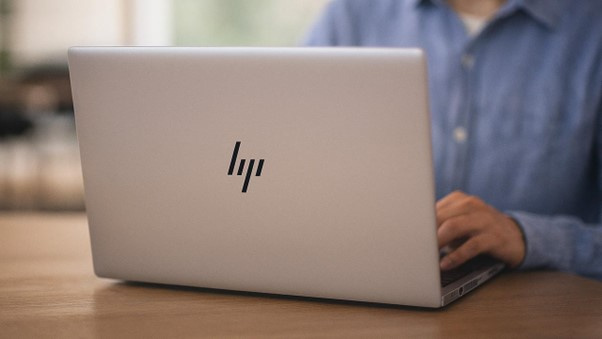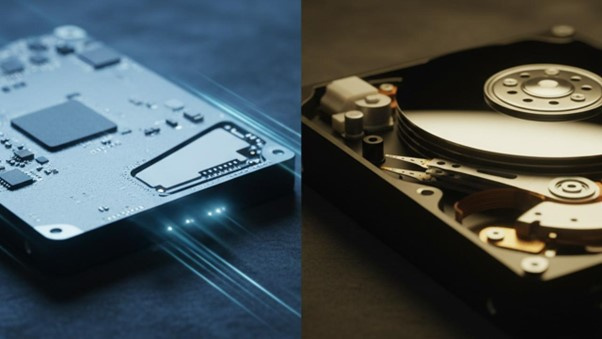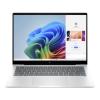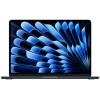Whether you’re starting uni, heading into high school with a BYOD requirement, or setting up a proper work-from-home space, a laptop is the centrepiece of your digital toolkit. It’s where assignments get written, video calls happen, and late-night Netflix breaks sneak in. The tricky part is working out which laptop actually suits your needs without being swayed by flashy marketing or drowning in technical specs.
The truth is, the “best” laptop isn’t the one with the biggest price tag. It’s the one that balances performance, portability, and everyday usability for the way you actually work. Here’s what to focus on when choosing a laptop that won’t let you down mid-semester or halfway through a Monday meeting.
Processing power and memory
Think of the processor and RAM as the brains and short-term memory of your laptop. They’re what decide whether your laptop feels snappy or sluggish.
- Processor (CPU): Look for an Intel Core i5, AMD Ryzen 5, or Apple M1/M2 as a baseline. These chips handle multitasking comfortably without burning through battery life. Core i7 or Ryzen 7 models are great if you run heavier software like Adobe Premiere or statistical analysis tools, but for most students and remote workers, mid-tier chips hit the sweet spot.
- RAM (memory): 8GB will get you by for web browsing, documents, and video calls, but 16GB is noticeably smoother if you juggle lots of apps or keep a sea of Chrome tabs open. If you want your laptop to feel quick for years rather than months, lean towards 16GB if your budget allows.
Rule of thumb: prioritise RAM over raw CPU speed unless you’re doing highly specialised work.


Storage
Old-school hard drives (HDDs) are too slow for modern life. What you want is a Solid-State Drive (SSD). An SSD makes everything faster: booting up, opening apps, even searching files.
- 256GB SSD: Works fine if you keep most files in cloud storage (Google Drive, OneDrive, iCloud).
- 512GB SSD: Safer if you like storing documents, photos, and software locally without constantly clearing space.
- 1TB SSD: Only necessary if you’re into video editing, gaming, or creative projects with huge file sizes.
If you’re used to relying on USB sticks or external drives, you’ll be pleasantly surprised how much simpler life is with a decent SSD inside your laptop.
Battery life
Marketing numbers often stretch the truth. A laptop boasting “12 hours of battery life” may last closer to 7 or 8 with real-world use (Zoom calls, Wi-Fi, streaming). For students, that needs to cover a full day on campus without scrambling for a power socket. For home workers, it means you can shift between the kitchen, garden, and desk without dragging a charger everywhere.
Look for reviews or specs that mention at least 8 hours of realistic use, and if you’re going MacBook, you’ll often get even more.
Display
You’ll spend hours staring at this screen, so make it a good one.
- Size:
- 13–14 inches = great for portability, lighter bags, and working anywhere.
- 15–16 inches = more comfortable for multitasking, spreadsheets, or creative work at a desk.
- Resolution: Full HD (1920×1080) should be your baseline. Avoid anything lower. If you’re in design or media, higher resolution or colour-accurate displays are worth considering.
- Brightness and glare: A brighter screen (300+ nits) is easier to use in sunny rooms or outdoors. Matte finishes help reduce reflections, while glossy screens often look more vibrant but pick up glare.
Tip: If you’ll be at a desk most days, a second monitor is one of the best productivity upgrades you can make.


Webcam and microphone: don’t be the blurry one
We’ve all been in video calls with someone whose webcam looks like it’s from 2008. Don’t be that person.
- Webcam: Aim for 1080p. Many budget laptops still ship with 720p, which looks grainy on modern displays.
- Microphone: Dual mics with noise reduction make your voice clearer and cut down on background noise—handy if you share a flat or have kids running around.
If the built-in gear isn’t up to scratch, it’s easy to plug in a USB webcam and headset later, but starting with good built-ins saves hassle.
Keyboard and trackpad: the daily touchpoints
Specs won’t tell you how comfortable it is to type. If you can, try typing on the laptop in-store. You’ll quickly know whether the keyboard feels cramped or natural.
- Keyboard: Look for decent key travel (not too shallow), a logical layout, and ideally backlighting for late-night sessions.
- Trackpad: Bigger glass trackpads (like on MacBooks) are smooth and accurate. Cheaper laptops often cut corners here, and you’ll notice it over time.
If you plan to dock at a desk, you can always add a full-sized keyboard and mouse later—but if portability is key, don’t compromise too much on these.
Connectivity: Wi-Fi and ports
Modern laptops are slim, but sometimes that means fewer ports. Think about what you actually need.
- USB-C: The new standard, often doubles as a charging port.
- USB-A: Still useful for older accessories like USB drives and printers.
- HDMI: Handy for presentations or plugging into a monitor or TV.
- Headphone jack: Double-check it’s there if you use wired headsets—some laptops have dropped it.
For Wi-Fi, Wi-Fi 6 support is a bonus, especially if you live in a busy household where everyone’s streaming at once.
Build quality and durability
If you’re carrying your laptop between campus, cafés, and home, durability matters. A solid chassis, tough hinges, and even small touches like spill-resistant keyboards can save you from an early replacement.
Also check the warranty. A laptop that can be serviced quickly in New Zealand is a safer bet than one that has to be sent offshore for repairs.
The wrap-up
For most students and home workers, the sweet spot is a laptop that balances performance, battery life, and everyday usability. Don’t get too caught up in the spec sheet—think about how you’ll actually use it.
- Processor: i5/Ryzen 5/M1 or better
- RAM: 8GB minimum, 16GB recommended
- Storage: SSD only, 256GB or more
- Battery: 8+ hours of realistic use
- Screen: 13–16 inch, Full HD or better
- Webcam and mic: 1080p webcam, dual mic if possible
- Ports: At least USB-C plus one or two others you’ll actually use
If you tick those boxes, you’ll end up with a laptop that makes your study or remote work life smoother, more reliable, and—most importantly—less frustrating.







